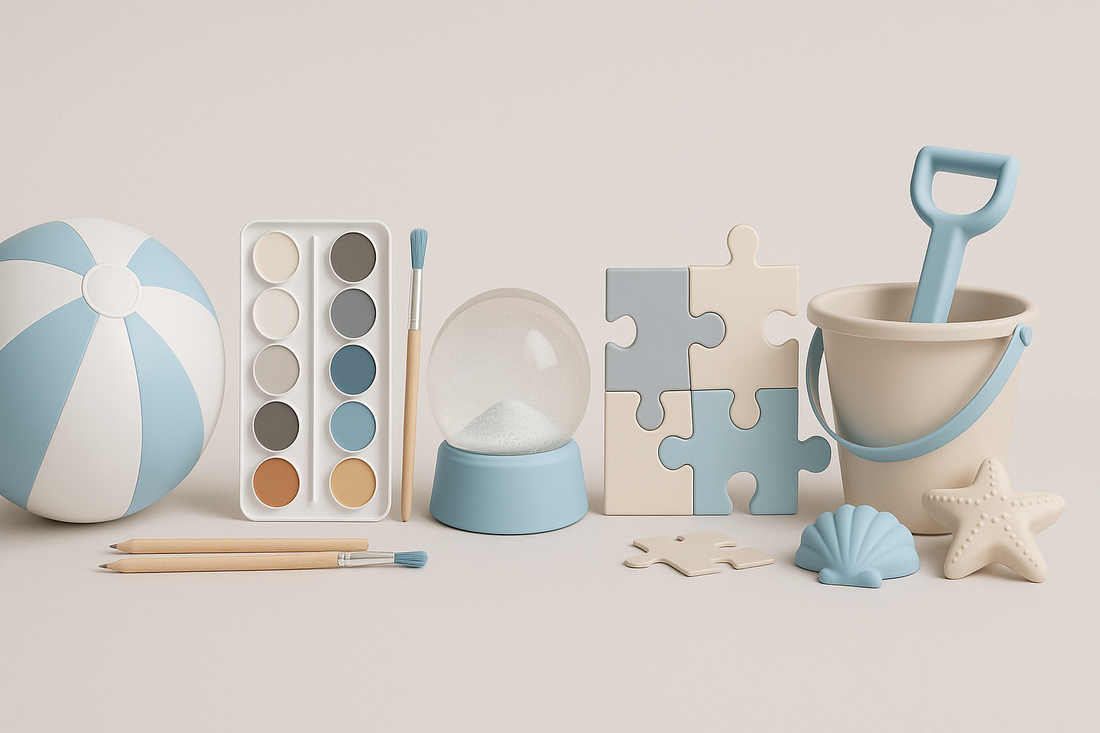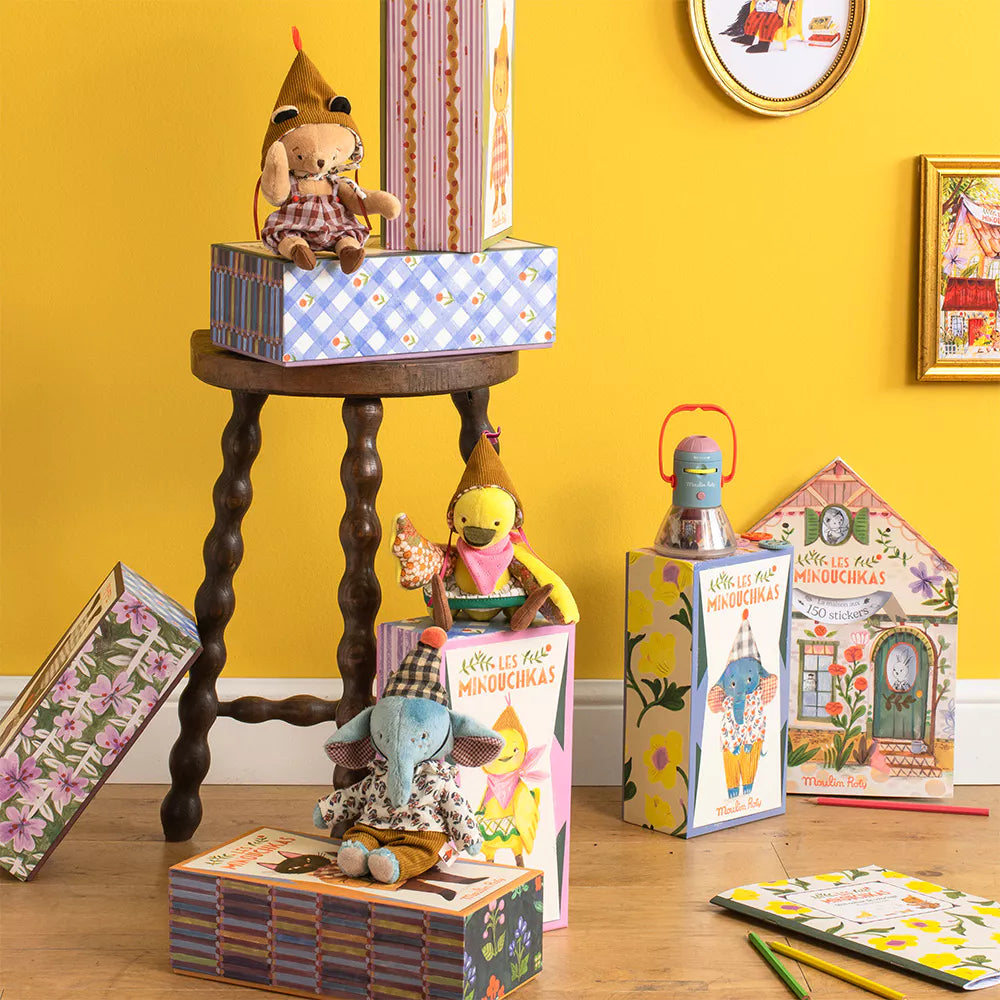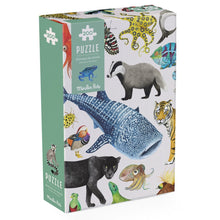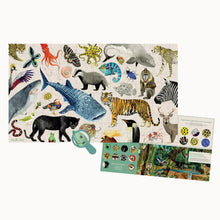Seasonal Toy Rotation: A Year-Round Planning Guide

Have you tried seasonal toy rotation?
Creating a seasonal toy rotation system is a great way to keep your child's playtime fresh, educational, and aligned with the natural rhythms of the year. By planning ahead for holidays and seasonal changes, you can maximise engagement while minimising clutter and toy fatigue.
Setting up seasonal toy rotation
Step 1: Inventory and Categorise
Begin by sorting toys into seasonal categories. Here are some suggestions to get you started!
- Summer Toys: Water play items, beach toys, outdoor sports equipment, balls, sand pit toys, skipping ropes, Christmas themed books and puzzles, Christmas crafts, family games
- Autumn Toys: Leaf collection kits, flower pressing products, Easter themed books and craft projects, Mother’s Day crafts, nature journals, skipping ropes
- Winter Toys: Indoor craft projects, puzzles, cozy reading materials, building sets for indoor play, snow globes, magic snow, French knitting toys, pom-pom making kits
- Spring Toys: Gardening sets, nature exploration kits, outdoor chalk, bubbles, flower pressing kits, insect and bird identification books, bug collection toys, Father’s Day crafts, Halloween crafts and costumes.
- Year-Round Core Toys: Basic building blocks, art supplies, books, jigsaw puzzles, and favourite comfort items
Step 2: Create Storage Systems
Invest in clear, labelled storage containers for each season. Use a colour-coding system (for example yellow for summer, orange for autumn, blue for winter and pink for spring). Store seasonal boxes in accessible areas like closets, under beds, or in a dedicated toy storage room.
Your year-round toy rotation calendar
Summer Dec - Feb (Australia)
Early December: It’s time to bring out water play toys, beach and sand pit tools! Add Christmas-inspired craft supplies, puzzles and family games.
January: Rotate in outdoor sports equipment and games, and summer reading collections, bubbles and play dough.
February: Include heat-friendly activities like frozen treat making kits and outdoor art supplies.
Autumn Mar - May (Australia)
March: Introduce Autum themed toys, leaf pressing kits, and autumn animal figurines.
April: Add Easter celebration items, egg decorating kits, and spring cleaning playsets.
May: Focus on Mother's Day craft supplies
Winter Jun - Aug (Australia)
June: Rotate in cozy indoor activities like puzzles, craft projects, and building challenges.
July: Add winter-themed books, indoor science experiments, and warm-weather dress-up clothes for imaginative play.
August: Include French knitting sets,
Spring Sept - Nov (Australia)
Early September: Rotate in gardening tools, seed planting kits, and nature journals. Add nature-themed puzzles, spring animal figurines and Father’s Day crafts.
Mid-September: Introduce outdoor exploration toys like magnifying glasses, bug catchers, and bird identification books.
October-November: Focus on growth and renewal themes with plant life cycle models and weather tracking charts.
Holiday-Specific Planning
Christmas/New Year: Rotate in holiday-themed puzzles, advent calendars, gift-wrapping play stations, festive building and craft sets.
Easter: Introduce egg decorating supplies, bunny-themed toys, and spring celebration crafts.
Halloween: Bring out Halloween costume dress-up boxes, spooky (age-appropriate) crafts, and play dough in Halloween colours.
Birthday Months: Create special birthday-themed rotations. Suggestions include pretend play cakes and treats, celebration crafts and bubble making kits.
Tips for Success
- Weekly Mini-Rotations: Swap 2-3 smaller items weekly to maintain novelty.
- Holiday Lead-up: Time rotations 2 - 4 weeks before major holidays to build anticipation.
- Make rotation day special by involving your child(ren) in the process. Let them help pack away toys and express excitement about what's coming next. Create a simple calendar showing when different seasonal toys will return.
- Be prepared for weather flexibility. Keep a 'rainy day' emergency rotation ready with indoor activities. Similarly, have an 'unexpected sunshine' box with outdoor toys for spontaneous good weather days.
- Keep a rotation Log.
- Make age-appropriate adjustments. As children grow, adjust the complexity and themes of seasonal rotations. For example, toddlers might enjoy simple seasonal colours and textures, while school-age children can handle more complex holiday traditions and seasonal science concepts.
Some Benefits of Seasonal Rotation
- Maintains excitement and novelty throughout the year
- Connects play to natural rhythms and cultural celebrations
- Reduces toy overwhelm and clutter
- Teaches children about seasons, holidays, and traditions
- Maximises the value of your toy investment
- Creates predictable structure while maintaining surprise
Getting Started!
Begin by identifying which season you're currently in and gathering appropriate toys. Start small with just one seasonal box and gradually build your system over the coming months. Remember, the goal is to enhance your child's play experience while making your life as a parent more organised and intentional.
With thoughtful planning and consistent implementation, your seasonal toy rotation system will become a cherished family tradition that brings joy, learning, and anticipation to every time of year.
Happy rotating x

















